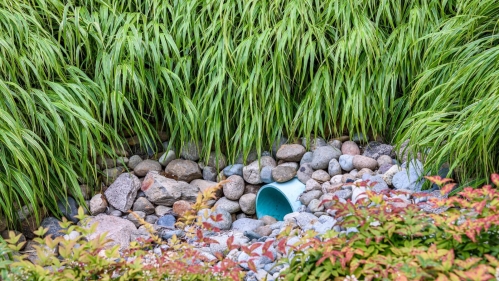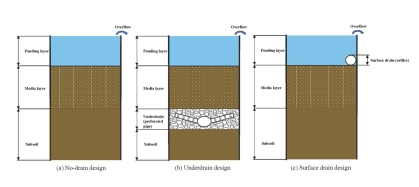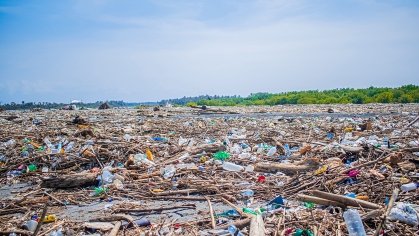Right as Rain

Qizhong (George) Guo, a professor in the Department of Civil and Environmental Engineering (CEE), and Zikai Zhou, a newly minted CEE PhD, have evaluated the hydrologic performance of a Linden, New Jersey rain garden. The results of their study have been published in the American Society of Civil Engineers’ (ASCE) Journal of Sustainable Water in the Built Environment.
Eco-friendly suburban and urban rain gardens are an increasingly popular way to manage stormwater runoff from rooftops, sidewalks, parking lots, and other impervious surfaces.
Besides controlling and reducing runoff, Guo reports that rain gardens generate additional environmental and ecological benefits by filtering out runoff pollutants before they reach downstream waterways; beautifying properties and neighborhoods; and providing food and shelter to birds, butterflies, and other wildlife.
“Our study helps to quantify the economic, ecologic, and social benefits of rain gardens, optimize the rain garden design, and help encourage a broader adoption of rain gardens by private and public property owners, as well as philanthropic and non-profit organizations.”
Guo and Zhou’s study focuses on one of six rain gardens built in 2017 with funding from a $2.7 million grant from the National Fish and Wildlife Foundation. The project goal was to install rain gardens, porous parking lots, and wetlands on “Blue Acres” land to curb flooding and restore ecosystems in Linden’s Tremley Point section, which had sustained $3 million in water damage from Superstorm Sandy.
A Quantitative Assessment
Rain gardens typically consist of an engineered soil layer of sand, soil and organic compost that is planted with plants and shrubs. The rain garden the team chose to study was built with a “no drain” drainage system on low-permeability subsoil. “We visually observed the rain garden’s hydrologic performance in the field for about three years,” recalls Guo. “But the hydrologic performance wasn’t quantitatively measured in the field.”
To do this, the team used mathematical modeling to identify and quantitatively differences between the no drain system’s hydrologic performance and that of two other drainage alternatives – underdrain and surface drain – under all the imaginable rainfall scenarios including entire dry, normal, and wet years and individual design storms.

According to Guo, while the runoff volume of a surface drain design is somewhat less than that of a no drain design, mosquitoes – well-known vectors of human and animal diseases – have less opportunity to breed in stagnating pools of water thanks to the surface drains’ shorter water ponding times.
Science-based Recommendations
Consequently, the study identified the surface drain design as the best-balanced design overall, recommending that it be added to present rain gardens and included in yet-to-be-built rain gardens in areas of north and central New Jersey with low subsoil permeability.
“The larger purpose of the study was to provide the science-based results that would help encourage communities likely to be damaged by stormwater runoff to install rain gardens even at locations where subsoils have low permeability,” Guo says. “We expect its publication to result in more rain gardens being built by residential, commercial, and public property owners to enhance community resilience to climate change, as well as living and work environments.”


